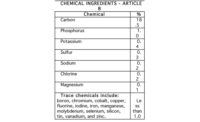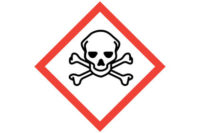We’re coming down the home stretch with OSHA Globally Harmonized System (GHS) for hazardous communication compliance. June 1, 2016 was the last effective completion date. By then OSHA expected employers to have accomplished three GHS objectives, as necessary:
1) Update workplace labeling,
2) Update hazard communication program, and
3) Provide additional employee training for newly identified physical or health hazards.
Most employers should have little problem meeting objectives 1 and 2. Objective 3 might challenge for some employers and occupational safety and health pros. Read on…
The Euro influence
Effects from GHS in the U.S. are clearly being impacted by activity in Europe. The June 1, 2015, effective date for U.S. employers to be in full compliance with all modified provisions of the 2012 GHS rule, for example, was set to match EU’s deadline for “mixture rule” for classifying and labeling chemicals. The mixture rule will help increase newly identify physical or health hazards globally.
EU’s REACH legislation continues to expand the understanding of chemical hazards and risks. Using REACH, manufacturers and importers have been calculating DNELs (Derived No Effect Levels) for registered chemicals. The DNEL is defined as the “level of exposure above which humans should not be exposed.”
Prior to 2013 worker exposure DNELs were not publically available. The German Social Accident Insurance (somewhat akin to the U.S. workers’ compensation system) has created a growing public database of more than 3,600 worker exposure DNELs.1 Additional DNELs can be found at the European Chemicals Agency website. DNELs are an important new risk interpretation method for worker exposure considering there are only 460 federal OSHA PELs and only about 600 ACGIH® TLVs®. The appearance of DNELs in safety data sheets used by U.S. employers will continue to grow.
Spirit of the times
Across the board, global and local chemical control activity is picking up steam. In June, Papa John’s took out a full-page ad in the USA Today touting how they and companies such as Chipotle and Panera Bread are taking artificial chemicals out of their foods. Pope Francis is expected to publish an encyclical on the environment this summer that’s anticipated to include chemical pollution concerns. The encyclical may be a key point of discussion during the Pope’s address before a joint session of the U.S. Congress scheduled for September.
And after years of political debate, the U.S. 1976 Toxic Substances Control Act (TSCA) may finally be reformed/modernized. Bipartisan House and Senate bills are very close to compromise and may be finalized by the time the Pope visits Washington. If a modernized TSCA is passed it will further newly identified physical or health chemical hazards. These are just a small sample of increasing chemical control activities.
Putting chemical hazards in context
The public and workforce are being bombarded with information on the hazards of chemicals. Unwarranted fear of chemicals is a downside of this information. OSHA’s June 1, 2016, compliance date for (re)new training on chemical hazards is an opportunity to put chemical exposure into proper perspective. Here are some suggestions:
Body chemistry
Nearly everything a person can think of is composed or controlled by chemicals. This point must be emphasized to workers.
During future HazCom training, show workers the table for chemical ingredients for article B (see box). Inform trainees that OSHA does not regulate articles i.e. products that do not readily release chemicals, but you need their opinion if the article should nonetheless be controlled in their workplace. You can also tell them the article contains parts per billion of lead and mercury.
After a couple minutes of discussion, inform the class that these are just a few of the natural chemicals that compose the human body. A more complete list, that include some surprising chemicals, is found in reference 2.
Other questions
• Ask the class if they know how they see. Light that enters our eyes comes in contact with a photosensitive chemical in the body called rhodopsin. Without this chemical we could not see.
• Ask workers how they are hearing you. If prior noise training classes are remembered, workers will know that sound waves hit the outer ear, move the ear drum, which in turn move small bones and muscles in the middle ear that in turn cause little hair cells in our inner ear to vibrate. These vibrations, however, are transmitted through nerves, which require chemicals to work, before sound is perceived by our brain. Without chemicals we could not hear.
• Ask permission to include a student in a chemical experiment – best to choose a blond, blue-eyed person with light skin color. Without touching the person, invade their personal space and talk about the person. A visible blush from embarrassment may soon appear. Tell the class that this is natural body reaction that stimulates the chemical adrenaline in the body. Adrenaline causes blood vessels to dilate, which gives the body an extra jolt of oxygen, which causes the visible blush. Without this chemical response mankind may not have survived early threats to existence.
• Ask the class to sniff the breath of the person next to them and ask if they smell anything. This gets a lot of chuckles and “I’m not doing that!” reactions. Chemicals that might be smelled in the breath include hydrogen sulfide, methyl mercaptan, and dimethyl sulfide (see reference 3 for more chemical odors from our body). Inform the class that hydrogen sulfide has an odor threshold of 0.00047 parts per million and the TLV® i.e. safe limit is 1 ppm.
• Tell the class that one ppm is similar to 30 seconds in one year. Explain one part per billion is roughly equal to one second in 32 years. Ask the class if they know the time equivalent for one part per trillion. Tell them to add three zeros to 32. Stress that modern science can measure many chemicals in the parts per trillion range — and nearly any chemical can be found anywhere if small enough concentrations are considered.
Demystify chemical exposure. The objective for chemical control is to keep chemicals, even natural ones such as adrenaline, at safe levels. All chemicals are safe if the dose is controlled.
References
1. http://www.dguv.de/ifa/Gefahrstoffdatenbanken/GESTIS-Stoffdatenbank/index-2.jsp
2. http://en.wikipedia.org/wiki/Composition_of_the_human_body
3. http://www.compoundchem.com/2014/04/07/the-chemistry-of-body-odours-sweat-halitosis-flatulence-cheesy-feet/




